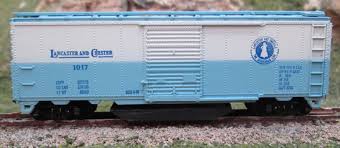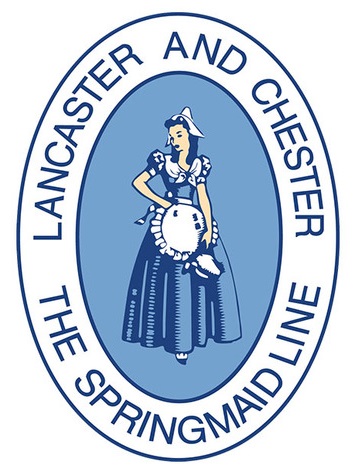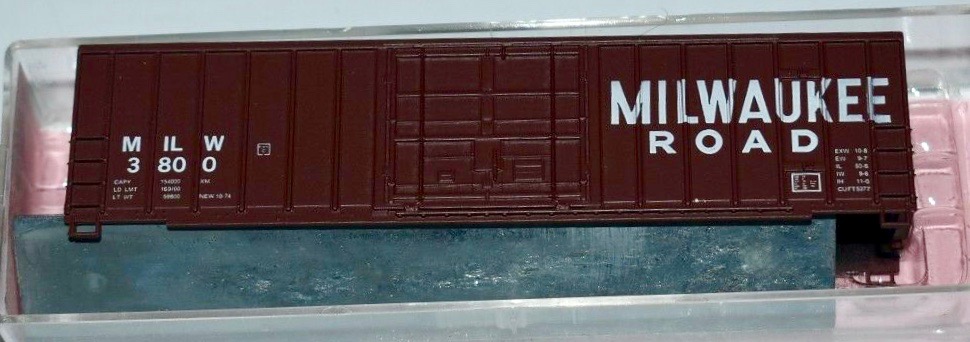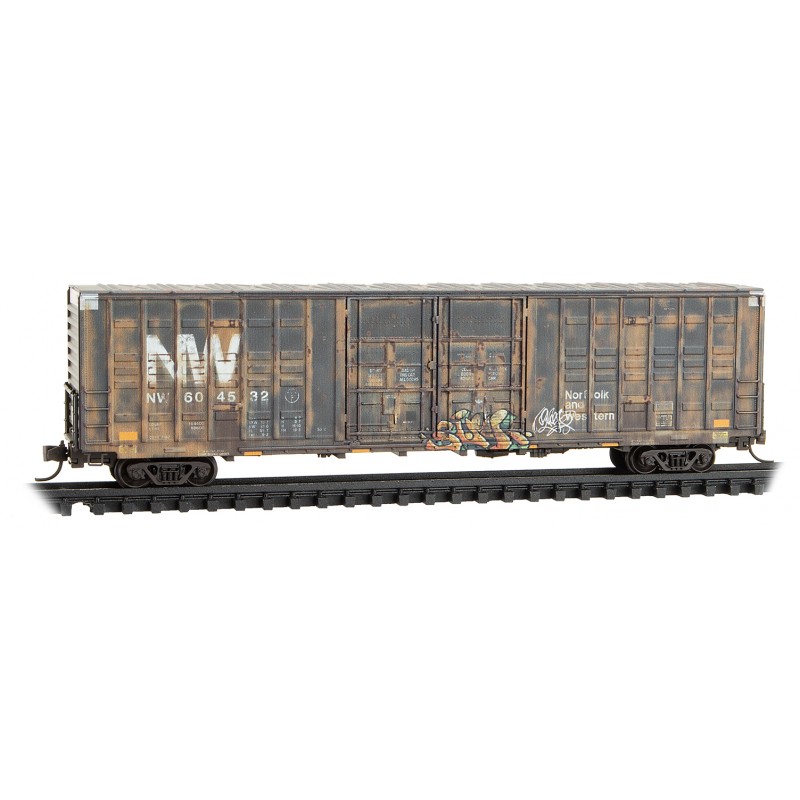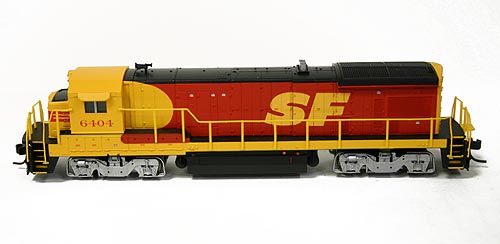Model Information: Originally, these models were produced in Japan by Kato for Con-Cor. However, since Con-Cor owned the tooling, they later decided to move the molds to their Chicago factory and later releases of the car were produced in the United States. This tooling may have been eventually moved to China when Con-Cor moved their production to China in the 1990s. ESM has produced this model in assorted paint schemes.
Prototype History: The Association of American Railroads had been establishing design standards for freight cars since the early part of the century. Each new design standard meant higher capacity, lighter, more durable cars. The 1937 standard 40' box car featured an interior height of 10'. Just prior to America's entry into the war, there was a push for an even larger interior height for the AAR standard. The first cars that would eventually be termed 1944 AAR, were actually built in 1941 but the war delayed its declaration as the standard. The new taller cars required a new design of end. Corrugated metal ends had been used since the days when wood side cars dominated for a very good reason, shifting loads would burst through wooden ends during sudden starts and stops! These corrugated panels were stamped in two sections, split horizontally down the middle. The 1937 standard had 5 ribs on one half and 4 ribs on the other -- creating what is called a 5-4 Dreadnaught end. The slightly taller 1944 model required something a little different. The lower panel has 4 ribs while the upper panel has 3 then a space and a final rectangular rib at the top. Called a 4-3-1 (or R-3-4) Improved Dreadnaught end, this design would dominate new box car construction for years.
Road Name History: The L&C began as the Cheraw & Chester in 1873 but the line’s sale on the court house steps to the Spring family in 1896 brought the change in name. The L&C links Lancaster and Chester, North Carolina which is a run of 29 miles. The Spring family owned textile mills along the line.
The early years were pretty rocky. The trestle over the Catawba River burned, followed by a depot a month later. Both were rebuilt. The line was 3’ gauge but by 1902, that was unsustainable and the line was standard gauged. Then in 1913 there was a disastrous wreck of a passenger train on Hooper’s Creek Trestle that killed 5, and wiped out the line’s passenger car fleet and the trestle. That was the end of passenger service for the Lancaster & Chester. Three years later, the bridge over the Catawba River was destroyed again, this time by a flood. The line has 66 curves, some quite sharp. The steepest stretch is Richburg Hill which has a maximum grade of 4.7%.
By the 30’s, the disasters had subsided and the L&C became famous for the use of publicity stunts such as naming 29 vice presidents, one for each mile of line. Gypsy Rose Lee was named Vice President of Unveiling.
The 50’s brought dieselization, first with GE’s and later EMD switchers. All locomotives wear the light blue with white trim and “The Springmaid Line” in the logo (a reference to the Spring’s textile business.)
In recent years, L&C has upgraded their track and bridges, and opened industrial parks along the line. In 2001, L&C bought 31 miles of connecting line from Norfolk Southern running from Lancaster to Kershaw, South Carolina.
This expansion increased traffic dramatically and more locomotives were acquired to augment what had been an all-switcher fleet. As of the end of 2013, the fleet included: three SW900’s, four SW1200’s, two SW1500’s, two GP38-2M’s, two GP38AC’s, and three GP38-2’s.
In 2010, the Spring family sold the L&C to the Gulf & Ohio shortline family. However, it appears for the moment that G&O will preserve the L&C blue paint scheme.
The early years were pretty rocky. The trestle over the Catawba River burned, followed by a depot a month later. Both were rebuilt. The line was 3’ gauge but by 1902, that was unsustainable and the line was standard gauged. Then in 1913 there was a disastrous wreck of a passenger train on Hooper’s Creek Trestle that killed 5, and wiped out the line’s passenger car fleet and the trestle. That was the end of passenger service for the Lancaster & Chester. Three years later, the bridge over the Catawba River was destroyed again, this time by a flood. The line has 66 curves, some quite sharp. The steepest stretch is Richburg Hill which has a maximum grade of 4.7%.
By the 30’s, the disasters had subsided and the L&C became famous for the use of publicity stunts such as naming 29 vice presidents, one for each mile of line. Gypsy Rose Lee was named Vice President of Unveiling.
The 50’s brought dieselization, first with GE’s and later EMD switchers. All locomotives wear the light blue with white trim and “The Springmaid Line” in the logo (a reference to the Spring’s textile business.)
In recent years, L&C has upgraded their track and bridges, and opened industrial parks along the line. In 2001, L&C bought 31 miles of connecting line from Norfolk Southern running from Lancaster to Kershaw, South Carolina.
This expansion increased traffic dramatically and more locomotives were acquired to augment what had been an all-switcher fleet. As of the end of 2013, the fleet included: three SW900’s, four SW1200’s, two SW1500’s, two GP38-2M’s, two GP38AC’s, and three GP38-2’s.
In 2010, the Spring family sold the L&C to the Gulf & Ohio shortline family. However, it appears for the moment that G&O will preserve the L&C blue paint scheme.
Brand/Importer Information: Con-Cor has been in business since 1962. Many things have changed over time as originally they were a complete manufacturing operation in the USA and at one time had upwards of 45 employees. They not only designed the models,but they also built their own molds, did injection molding, painting, printing and packaging on their models.
Currently, most of their manufacturing has been moved overseas and now they import 90% of their products as totally finished goods, or in finished components. They only do some incidental manufacturing today within the USA.
Important Note: The Con-Cor product numbering can be very confusing. Please see here in the article how to properly enter Con-Cor stock numbers in the TroveStar database.
Currently, most of their manufacturing has been moved overseas and now they import 90% of their products as totally finished goods, or in finished components. They only do some incidental manufacturing today within the USA.
Important Note: The Con-Cor product numbering can be very confusing. Please see here in the article how to properly enter Con-Cor stock numbers in the TroveStar database.
Item created by: gdm on 2016-10-27 10:31:59. Last edited by CNW400 on 2020-07-13 16:55:34
If you see errors or missing data in this entry, please feel free to log in and edit it. Anyone with a Gmail account can log in instantly.
If you see errors or missing data in this entry, please feel free to log in and edit it. Anyone with a Gmail account can log in instantly.


